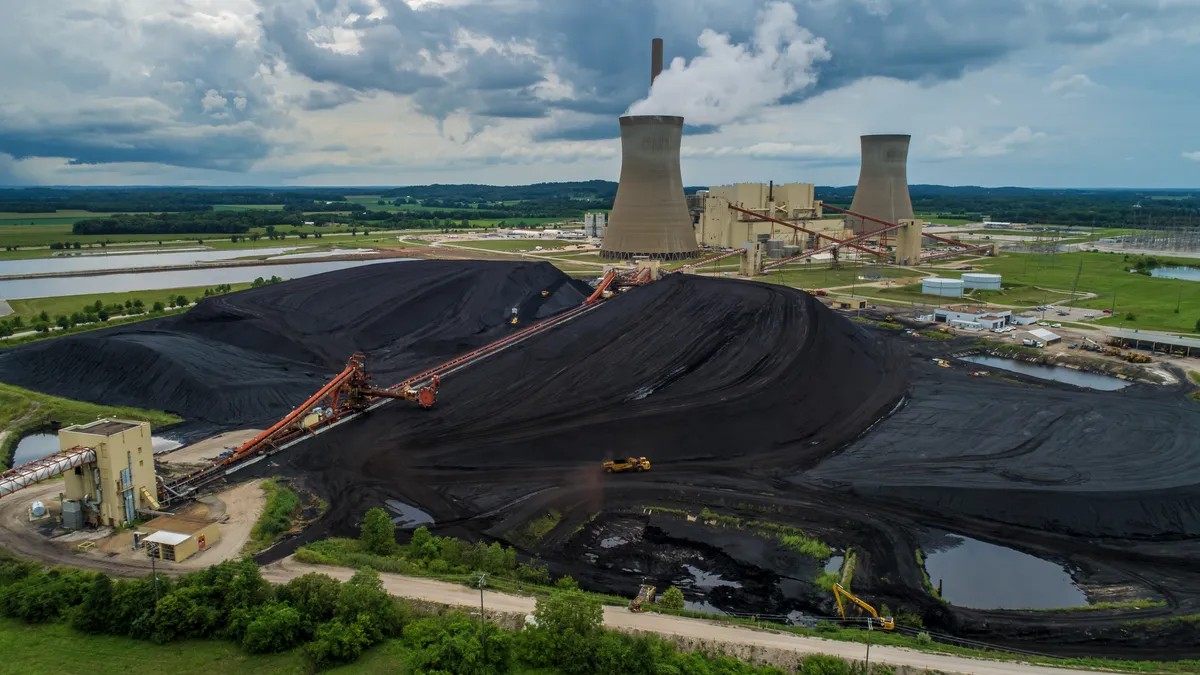Dive Brief:
-
The Environmental Protection Agency Wednesday proposed tightening the limits on wastewater pollution from coal-fired power plants, including banning discharges of two types of pollution.
-
Coal-fired power plants that will stop burning coal by 2028 face less stringent requirements while generating units that stop burning coal by 2032 would be able to comply without significant investments, Radhika Fox, assistant administrator for EPA’s water office, said Tuesday during a media briefing.
-
The proposal, which the EPA expects to finalize next year, is part of a broader effort to reduce pollution from power plants. “As we further develop rules pertaining to our power sector strategy, we're committed to moving forward in a transparent and orderly way to provide industry, states, grid operators and other stakeholders with regulatory certainty and a clear long-term planning horizon to support their decision making,” EPA Administrator Michael Regan told reporters.
Dive Insight:
The EPA estimates its proposal will cut pollution in wastewater, such as mercury, arsenic and bromide, from coal-fired power plants by 584 million pounds a year. It would increase a household’s electric bill by 63 cents a year on average, according to the agency.
“This rule protects all communities, especially those communities who have been vulnerable to coal plant pollution,” Regan said.
The EPA also estimates that the proposal will lead one power plant to retire that wouldn’t have otherwise and reduce the overall electric output from remaining plants, an agency staff member told reporters.
The proposed rule bars discharges of flue gas desulfurization wastewater and bottom ash transport water. The EPA asked for comments on whether it should ban combustion residual leachate.
It also addresses wastewater stored in ash ponds and other surface impoundments. The proposal would define those “legacy” wastewaters and the EPA asked for comment on whether to develop more stringent discharge standards for them.
The proposed discharge limits are based on the latest available control technologies, according to Fox. Once finalized, the limits will be included in National Pollutant Discharge Elimination System permits issued by states and the EPA’s regional offices, she said.
The proposal includes “flexible” compliance pathways for power plants that commit to retiring before 2032, Fox said, noting that the EPA examined how the proposal would affect grid reliability.
The rule was developed with robust stakeholder involvement, according to Regan.
“We've had effective outreach to all of our stakeholders and … we have attempted with this rule, and with some other rules, to align our rulemaking schedule, so that the power sector can be thoughtful about the investments that they have to make for longer term strategic thinking around how to reduce pollution,” Regan said.
The U.S. coal-fired power plant fleet is in decline, partly because of the cost of complying with environmental regulations. There were 218 GW of coal-fired generation making up 17.3% of the total U.S. generating fleet at the end of last year, down from 266 GW and 22.2% of the fleet in 2018, according to the Federal Energy Regulatory Commission. The agency expects nearly 27 GW of coal capacity to shutter by the end of 2025.
In the PJM Interconnection, the largest U.S. grid operator, coal capacity makes up about three-quarters of the nearly 53.2 GW of total capacity that has retired or plans to retire from 2011 to 2024, according to Monitoring Analytics’ most recent market report.
Coal unit retirements are mainly driven by their inability to compete with efficient combined-cycle units burning low cost natural gas, the PJM’s market monitor said. They are also affected by state and federal regulatory decisions, according to Monitoring Analytics.
PJM operates the grid and electricity markets in 13 Mid-Atlantic and Midwest states and the District of Columbia.















